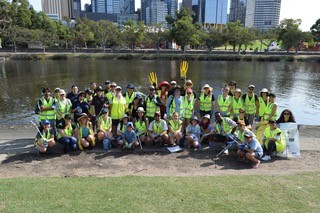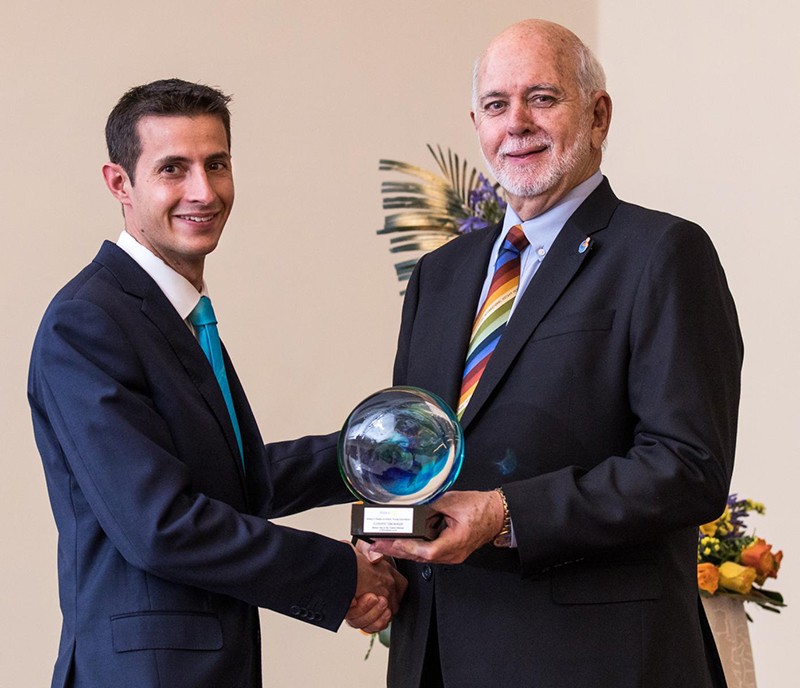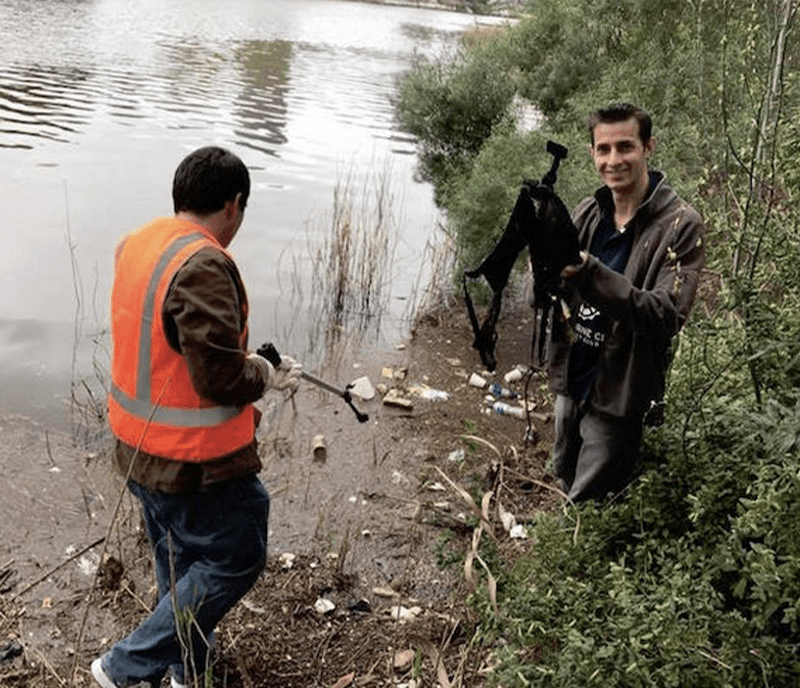OceanCleanX

OceanCleanX
Location/Club: Melbourne City Rotaract Club
Keywords: Beautification, Oceans, Coral reefs, Carbon-neutrality, Biodiversity, Ecosystems, Endangered species
Website Link : Website.
Description
Ludovic Grosjean has been fighting ocean pollution since he first encountered the broken bodies of seabirds killed by swallowing plastic. As a young engineer with a passion for the ocean, he moved from France to Australia and built a thriving business designing smart solutions to monitor the environment. But by his twenties, leading clean-ups of the Yarra River with the Melbourne City Rotaract Club in Australia (shown above, in a photo by Katie Irene), he realized that technology alone “doesn’t solve the problem. It starts with people and finishes with people.”
From this he created the four-part strategy of Ocean CleanX to combine the strengths of people, big data, and technology.
Volunteers are crucial: the plan starts with people all over the world taking pictures of waterborne pollutants, geo-tagging them, and sending the images via the Ocean CleanX app to a giant database. There, the images will serve to train an algorithm using Artificial Intelligence to recognize all kinds of pollution. Informed with this intelligence, drones and other unmanned platforms can be deployed to remove it at the source, before it reaches the oceans. The final, crucial step is public awareness: making the pathways of pollution visible so communities can stop it.
The work is urgent, but with 1.2 million Rotarians, smart phones, and AI, “we could save our oceans together,” Ludovic forecasts. His concept amazed Rotarians in Australia, who urged him to submit it for RI recognition. At age 29, he was chosen by RI President Barry Rassin to be honored by Rotary and UN Environment as one of six Rotary People of Action Young Innovators in Nairobi in 2018. But there, talking with young Africans who share his passion about saving rivers, Ludovic realized his work was just beginning.
“The app needs to be redesigned for basic phones in Africa. We need to clearly understand the challenges and opportunities in Developing Countries,” he says, where people feel the urgency of cleaning rivers and seas. He’s got to engage investors, reach out to other engineers, and find solutions to challenges that change depending on location.
“If you can solve this pollution problem in Australia, you can do it anywhere,” he says. “Australia is sparsely populated, with a huge coastline, huge variations of temperature, sharks, crocodiles, deadly jellyfish, sea urchins and snakes. It’s dangerous to send people out to do clean-ups: we need technology.”
And the Ocean CleanX App “needs to be redesigned for humanity,” from Africa to China. If we fail, and ocean pollution continues at the present rate, “rivers will have carried enough plastics to cover our entire oceans by 2040,” Ludovic says. “I’m offering a challenge even bigger than polio, but it’s not too big: about 90% of the plastic pollution around the world comes from just ten rivers.”

